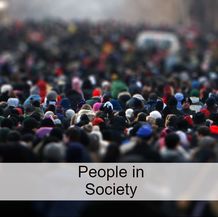People in SocietyOverlapping with books in our other subject areas, ‘People in Society’ could be an umbrella term for all Triarchy titles. It’s a reminder that it’s never helpful to see individuals or organisations as separate from their wider context and that a systems approach is the most rigorous and productive way of remaining aware of the wider context.
Therapy is an important theme in this area - read more about Triarchy Press Therapy titles here. |
Key People in Society titles ...
|
EXPLORE ... |

Goblin Queens and Qualia Knights - Phil Smith
Repurposing the codes of chivalry and courtly love in an existential crisis Goblin Queens and Qualia Knights is a little book of comfort for people who are troubled by the way that life is being hollowed out by: social media, life on the phone, climate change, populist politics, banality, hyper-capitalism, AI and so on. It suggests clever and simple ways to remain true to yourself, even to be yourself, in the face of a thousand pressures to become someone else. It makes life into a pilgrimage of purpose, humour, awareness and compassion. It offers a contemporary myth and initiation and a range of simple somatic practices that could change your life. It can be used by anyone who wants to lessen their digital dependence and deepen their connection with their surroundings. It can be used by coaches, therapists and teachers - as well as walking artists, writers and anyone with a general interest in movement and somatics or politics and pedestrianism. 
A Sacred Unity ~ Gregory Bateson
Now back in print.. “A Sacred Unity in this new edition comes at a profoundly consequential moment. Perceptual distortions–always with us–are now threatening humanity itself and the entire biosphere. In the face of such muddle and danger, Gregory Bateson provides deep wisdom, explaining how living things and their relationships connect to the whole. This is not an easy book but it is one that richly rewards the careful reader with fresh understanding of what it means to be human in a world of biological and natural systems.” Jerry Brown California Governor, 1975-1983; Executive Chair, Bulletin of Atomic Scientists, 2011-2019 
Soul Moves
Sheila Ryan These essays follow the moving lines of change. From house moves to migration, from ageing and retiring to grieving and re-constellating relationships, changes which can be hard to navigate. What the author discovered anew, in moving to Bexhill, is that "when we make of change a soul move, resilience, hope, beauty, community and celebration come too.” 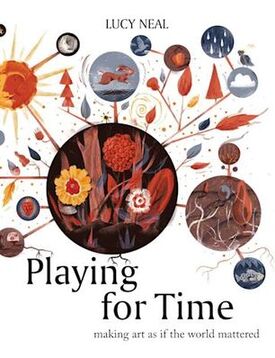
Playing for Time ~ Lucy Neal
Now back in print...This groundbreaking handbook (first published in 2016 and now needed more than ever in the face of multiple unfolding crises) is a resource for artists, community activists and anyone wishing to harness their creativity to make change in the world. Playing for Time explores the pivotal role artists play in re-thinking the future; re-inventing and re-imagining our world at a time of systemic change and uncertainty. Playing for Time identifies collaborative arts practices emerging in response to planetary challenges, reclaiming a traditional role for artists in the community as truth-tellers and agents of change. 
Touching the Flame ~ Mary Booker
Mary Booker here offers a guide to the roots and nature of desire. She draws on her autobiographical writing, movement art, poetry, Buddhist practice and dramatherapy skills to explore the origins, impact, constraints and blossoming of desire in her own life. Amongst the questions she considers: • If desire is for something other, does a sense of lack always accompany it? • Does one desire always point to a deeper desire? • Does desire always lead to suffering, as suggested in Buddhism? • Desire is highly motivating. How can we best access that energy? • Is desire by nature insatiable? Does it always seek more? • Is desire essential to life? • Why do illness and depression remove desire? Are they too absorbing? • What is the relationship between desire and vulnerability? 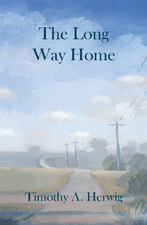
The Long Way Home ~ Tim Herwig
"We keep things inside, those of us who live in the Midwest. Anyone who lives out in the open where little stands between you and the horizon knows this. It’s all sky. It’s infinitely blue in summer and hammering gray in winter. So you keep your head down and your thoughts inside. Yet the landscape is haunted with memories. The memories of lives lived having kept everything inside. They seep out of us like a spring or the fog and attach themselves to objects, sounds, smells, the wind. They attach themselves to anything that can bear to take them. Some of the memories we keep inside, some of them are terrible. Terrible things done to us, and terrible things we have done to others. We keep them down, and we run. We run so far and so deep that memory becomes forgetfulness. We’re lost. We’re lost to the living of life." So begins The Long Way Home - a closely observed account of the author's actual 500-mile walk from Chicago to Minneapolis and parallel journey through the memories of his traumatic and painful life as a young man. 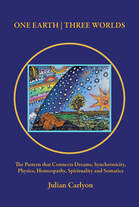
One Earth | Three Worlds ~ Julian Carlyon
In One Earth | Three Worlds, Julian Carlyon offers us a way to reconcile the apparently conflicting perspectives of western medicine, quantum mechanics, spirituality, psychoanalysis, ancient Chinese wisdom and ‘New Age’ thinking. He starts by outlining the theory of quantum entanglement, which shows that two events separated in space can be connected in the absence of any known causal mechanism linking them. This leads to Jung’s theory of synchronicity – itself an acausal connecting principle – biologist Rupert Sheldrake’s work on morphic resonance and physicist David Bohm’s proposed model of an implicate and explicate order. Chapters on similarity, homeopathy, healing, dreams, creativity, choice and the body all use the author’s threefold perspective of ‘oneness world’, ‘twoness world’ and ‘intermediary world’ to weave together apparently disparate and conflicting worldviews. The final chapter asks what a truly holistic science rooted in these three approaches to reality might look like. 
Beyond Threat ~ Nelisha Wickremasinghe
Unless we are in physical danger few of us think we are living ‘under threat’. Yet our brains believe we are at risk many times a day. Nowhere is this more true than at work, where our response to deadlines, budget cuts, abrasive managers, competitive colleagues and dissatisfied customers is too often controlled by a part of our brain that’s better suited to detecting, devouring or running away from predators. This is our threat brain, and on its own it is little help in dealing with the complex challenges of organisational life. In Beyond Threat, business psychologist and international leadership and organisational change consultant Dr. Nelisha Wickremasinghe takes us beyond the threat brain and describes the workings of our evolved Trimotive Brain which can respond with intelligence and compassion to unwanted, unexpected and unpleasant life experiences – if we learn how to manage it. 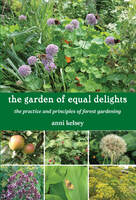
The Garden of Equal Delights - Anni Kelsey
the garden of equal delights is written for anyone who is dreaming of, thinking of, planning or actually gardening in a forest garden. But it also challenges our whole idea of what it is to be a human in nature and the way we understand the idea of 'gardening'. That makes it a book for anyone awake in a climate and environmental emergency. 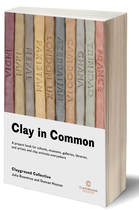
Clay in Common: A project book for schools, museums, galleries, libraries, and artists and clay activists everywhere
Julia Rowntree & Duncan Hooson Clay in Common starts by offering passionate arguments for the vital role of clay in passing on craft skills and fostering knowledge of the material world -- skills and knowledge that are vital for creativity, social engagement and the mental and physical wellbeing of (especially) younger people today. Beautifully illustrated and packed with case studies and detailed project examples, Clay in Common is a hands-on project guide explaining how to set-up and run a clay project from start to finish - in school, in community, civic and many other kinds of space. 
Small Arcs of Larger Circles: Framing through other patterns ~
Nora Bateson This is an important first collection of essays, reflections and poems by Nora Bateson, the noted research designer, film-maker, writer and lecturer. The book offers important advice and new thinking on issues like immigration, systems thinking, new economic and financial models, future thinking and strategic planning, sustainability and governmental ethics, agency in organizational leadership, the education system and organizational governance. 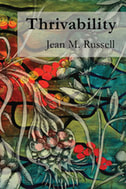
Thrivability: Breaking Through to a World that Works
Jean M. Russell The book sets out to challenge the ‘breakdown thinking’ [conThink] that focuses only on defensive reactions to the economic, social, political, and environmental crises and catastrophes we face. In its place she proposes ‘breakthrough thinking’ [altThink]: an approach that recognizes the gritty reality but enables us to envision and co-create a world of wellbeing and health. The book is peppered with references, practical questions and exercises to bring thriving to your organization and way of life. |
The Idioticon
You might also be interested in our other subject areas ...
|
All People in Society titles ...
A First Idioticon
Anywhere
Arranged by Flowers
Before the Curtain Opens
Beyond Threat
Clay in Common
Designing Regenerative Cultures
Ecolonomy
Economies of Life
Enchanted Things
Encounters with the Other
Garden of Equal Delights (The)
Humanising Healthcare
In Search of the Missing Elephant
Local Money
Mythogeography
On Walking
Small Arcs of Larger Circles
Ten Things to do in a conceptual emergency
The Architect-Walker
The Failure Files
The Footbook of Zombie Walking
The Forward March of Children's Justice
The Future of the Mind
The Garden of Equal Delights
The Mythical Organisation
The Wisdom of Not-Knowing
Three Horizons: The Patterning of Hope
Thrivability
Touching the Flame
Towards the Third Modernity
Windows Kiss the Shadows of the Passing Thirty Million
Anywhere
Arranged by Flowers
Before the Curtain Opens
Beyond Threat
Clay in Common
Designing Regenerative Cultures
Ecolonomy
Economies of Life
Enchanted Things
Encounters with the Other
Garden of Equal Delights (The)
Humanising Healthcare
In Search of the Missing Elephant
Local Money
Mythogeography
On Walking
Small Arcs of Larger Circles
Ten Things to do in a conceptual emergency
The Architect-Walker
The Failure Files
The Footbook of Zombie Walking
The Forward March of Children's Justice
The Future of the Mind
The Garden of Equal Delights
The Mythical Organisation
The Wisdom of Not-Knowing
Three Horizons: The Patterning of Hope
Thrivability
Touching the Flame
Towards the Third Modernity
Windows Kiss the Shadows of the Passing Thirty Million

